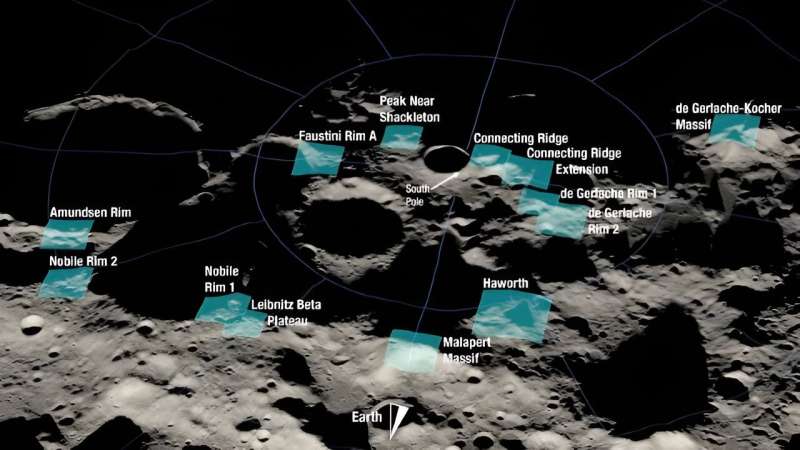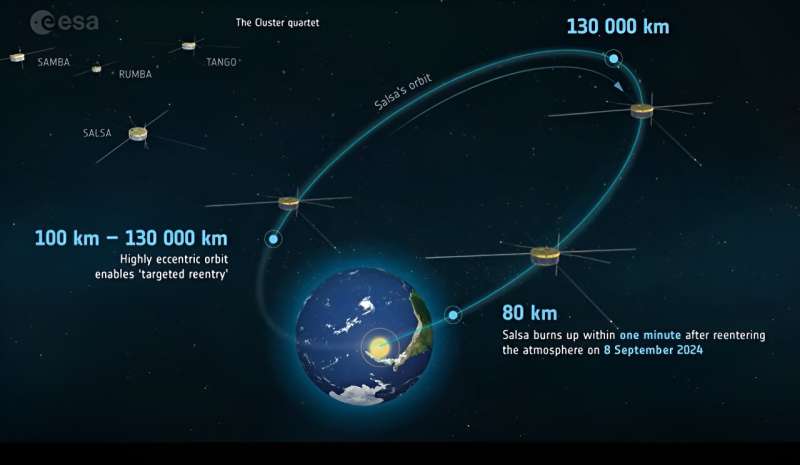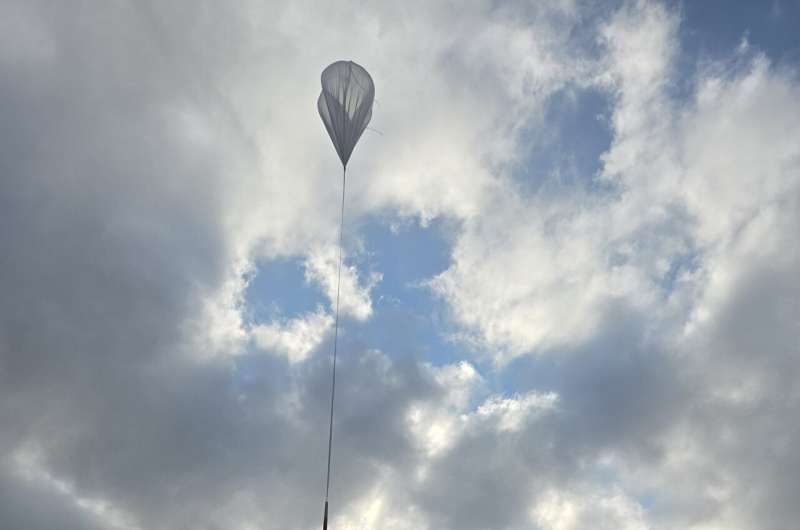Crew Dragon launches on Polaris Dawn private astronaut mission
Tuesday, 10 September 2024 09:47

Chang’e-6 orbiter turns up at Sun-Earth Lagrange point after moon sampling mission
Tuesday, 10 September 2024 08:36
A smooth start to life in orbit for Sentinel-2C
Tuesday, 10 September 2024 08:00
Sentinel-2C has completed its important first few days in space, which saw teams on the ground working around the clock to ensure the spacecraft is ready to begin its mission.
The 2024 Global Methane Budget reveals alarming trends
Tuesday, 10 September 2024 08:00
The Global Methane Budget 2024 paints a troubling picture of the current state of global methane emissions. The new report reveals that human activities are now responsible for at least two-thirds of global methane emissions.
This marks a significant increase in human-produced methane sources over the past two decades, with emissions rising by 20%, with the fastest rise occurring over the last five years.
Juice confirms that Earth is habitable
Tuesday, 10 September 2024 08:00
During its flyby of Earth on 20 August, ESA’s Jupiter Icy Moons Explorer (Juice) found ingredients for life in Earth’s atmosphere.
SpaceX Polaris Dawn mission aiming for history with first private spacewalk
Tuesday, 10 September 2024 07:23
The SpaceX Polaris Dawn mission, a daring multiday orbital expedition that will feature the first-ever spacewalk by private citizens, is targeting liftoff early Tuesday, though weather could play spoilsport.
A four-member crew, led by Shift4 Payments CEO Jared Iscaacman, is also aiming to fly deeper into space than any other manned mission in more than half a century, reaching a peak altitude of 870 miles (1,400 kilometers).
"SpaceX is targeting Tuesday, September 10 at 3:38 am ET (0738 GMT) for Falcon 9's launch of Polaris Dawn to low-Earth orbit from Launch Complex 39A at NASA's Kennedy Space Center in Florida," SpaceX said in a news release.
SpaceX launches all-civilian crew for first private spacewalk
Tuesday, 10 September 2024 07:23
SpaceX launched its historic Polaris Dawn mission on Tuesday—an audacious orbital expedition that will catapult civilians into a high-radiation region of space and see them attempt the first-ever spacewalk by non-professional astronauts.
Led by Shift4 Payments CEO Jared Isaacman, the four-member crew aims to journey farther into the cosmos than any other manned mission in more than half a century, since the end of the Apollo era.
On the mission's first day, they will soar to a peak altitude of 870 miles (1,400 kilometers) before returning into a lower orbit.
"Dragon will travel repeatedly through the orbital altitudes of over 10 thousand satellites and bits of space debris," SpaceX founder CEO Elon Musk wrote on X.
Lynk Global shakes up leadership amid ongoing funding talks
Monday, 09 September 2024 19:33

U.S. GPS modernization faces delays, technical challenges: GAO report
Monday, 09 September 2024 18:48
Like a diamond in the sky: How to spot NASA's solar sail demo in orbit
Monday, 09 September 2024 16:35
Now that its reflective sail has deployed fully open in orbit, the Advanced Composite Solar Sail System can be seen in the night sky from many locations across the world!
Stargazers can join NASA's #SpotTheSail campaign by using the NASA app on mobile platforms to find out when the spacecraft will be visible at their location. The app, which is free to use and available on iOS and Android, provides a location-specific schedule of upcoming sighting opportunities. A built-in augmented reality tool points users to the location of the spacecraft in real time.
Can you spot the solar sail? Share your viewing experience online using the hashtag #SpotTheSail for a chance to be featured on NASA's website and social media channels.
Artemis III landing sites identified using mapping and algorithm techniques
Monday, 09 September 2024 15:44
Where would be the most ideal landing site for the Artemis III crew in SpaceX's Human Landing System (HLS)? This is what a recent study submitted to Acta Astronautica, and available on the arXiv preprint server, hopes to address as an international team of scientists investigated plausible landing sites within the lunar south pole region, which comes after NASA selected 13 candidate landing regions in August 2022 and holds the potential to enable new methods in determining landing sites for future missions, as well.
Video: Cluster reentry explained—world's first targeted reentry
Monday, 09 September 2024 14:56
The first of four satellites that make up ESA's Cluster mission is coming safely back down to Earth, marking a brilliant end to this remarkable mission.
The satellite's orbit was tweaked back in January to target a region as far as possible from populated regions. This ensures that any spacecraft parts that survive the reentry will fall over open ocean.
During 24 years in space, Cluster has sent back precious data on how the sun interacts with Earth's magnetic field, helping us better understand and forecast potentially dangerous space weather.
With this first ever targeted reentry, Cluster goes down in history for a different reason, taking ESA well beyond international space safety standards and helping ensure the long-term sustainability of space activities.
Provided by European Space Agency
NASA scientific balloon takes flight with student-built payloads
Monday, 09 September 2024 14:31
NASA's Scientific Balloon Program's fifth balloon mission of the 2024 fall campaign took flight Wednesday, Sept. 4, 2024, from the agency's Columbia Scientific Balloon Facility in Fort Sumner, New Mexico. The HASP 1.0 (High-Altitude Student Platform) mission remained in flight over 11 hours before it safely touched down. Recovery is underway.
HASP is a partnership among the Louisiana Space Grant Consortium, the Astrophysics Division of NASA's Science Mission Directorate, and the agency's Balloon Program Office and Columbia Scientific Balloon Facility. The HASP platform supports up to 12 student-built payloads and is designed to flight test compact satellites, prototypes, and other small experiments. Since 2006, HASP has engaged more than 1,600 undergraduate and graduate students involved in the missions.
UK-US integration key to future of space security
Monday, 09 September 2024 13:37 U.S. Space Force Lt. Gen. David N. Miller, Jr., commander of Space Operations Command, and Chief Master Sgt. Caleb Lloyd, SpOC senior enlisted leader, met with Airmen, Guardians and UK counterparts during a visit Aug. 27-30.
The SpOC command team visited RAF Waddington, Feltwell and High Wycombe to engage with members of the Space Force on morale, readiness, and interoperability with host
U.S. Space Force Lt. Gen. David N. Miller, Jr., commander of Space Operations Command, and Chief Master Sgt. Caleb Lloyd, SpOC senior enlisted leader, met with Airmen, Guardians and UK counterparts during a visit Aug. 27-30.
The SpOC command team visited RAF Waddington, Feltwell and High Wycombe to engage with members of the Space Force on morale, readiness, and interoperability with host 


